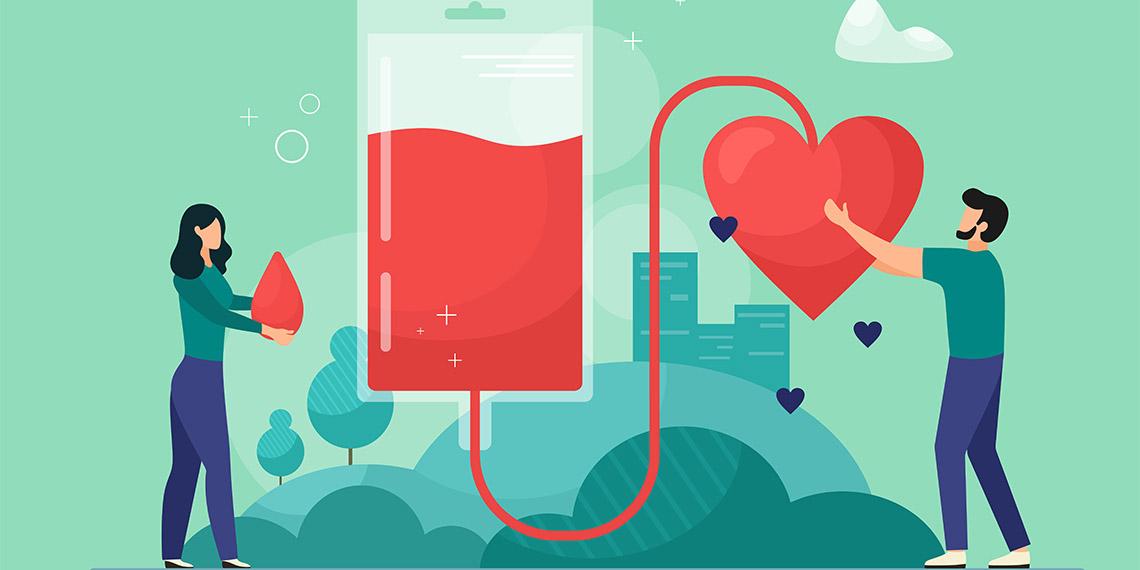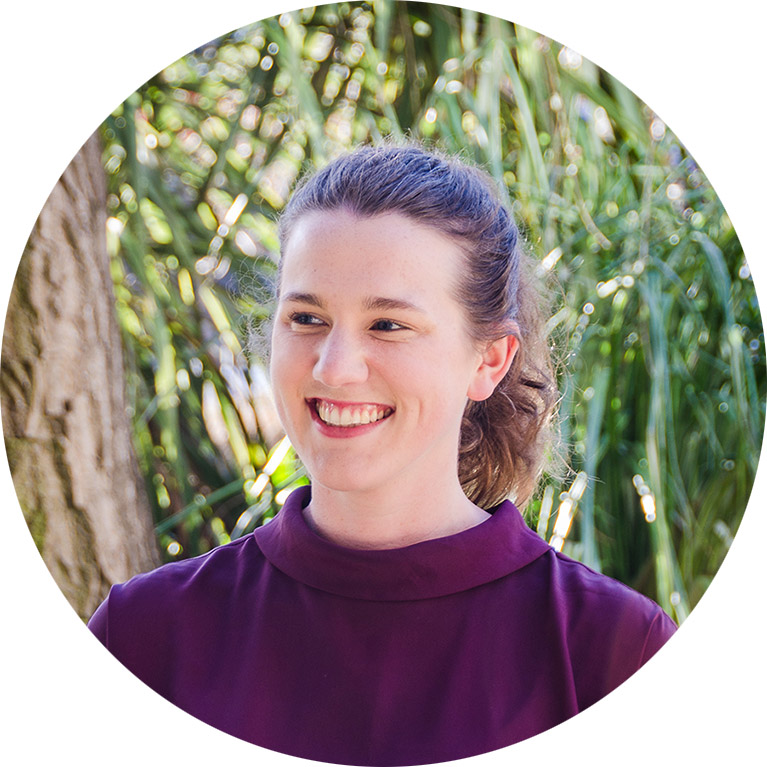You are here
The Power of Blood

The work of New Zealand Blood Service (NZBS) is crucial to secure the country’s constant need for blood donations. National Manager of Marketing and Communications Asuka Burge explains why NZBS are always seeking more Kiwi to give blood, what they can expect during their first visit to the donor centre and why plasma donations are essential.
In New Zealand, it is easy to take the available blood donations for granted. We have highly skilled nurses, a safe and hygienic health system and an abundant population of potential blood donors. And yet, although we all know that these donations do not appear out of thin air, convincing people to roll up their sleeves and give blood is an ongoing task for New Zealand Blood Service.
‘The hardest thing is trying to get someone from … “I thought about it”, to actually taking action, booking the appointment and coming in,’ says NZBS National Manager of Marketing and Communications Asuka Burge.
Every year, more than 29,000 New Zealanders need blood products, ranging from one-off surgeries or emergencies, to those fighting ongoing conditions, such as cancer patients or people with immune deficiencies. ‘Some of them may need a transfusion every six days for the rest of their lives,’ Asuka says, ‘so you can imagine over their lifetime that amounts to thousands of transfusions.’
To gather the volume required, each year NZBS must find at least 25,000 new donors. This allows them to meet the rising demand while replacing those whose age, medical circumstances or change in location means they can no longer donate.
In total, NZBS currently has just over 111,000 people giving blood, which is less than four percent of possible donors.
Understandably, the fear of needles deters a significant portion of the population... ‘Surprisingly, quite a few people who say that have tattoos,’ Asuka laughs, ‘but that does seem to be a genuine fear, as well as “will it hurt?”’ However, she says many donors report that it does not hurt, ‘They actually find the little prick on the finger when we take the haemoglobin test is worse’.
Ultimately, NZBS wants donors to feel safe and unafraid of the donation process, and for their time at the donor centre to be a positive experience.
‘It’s not like coming to a hospital or a lab—we try and make this as comfortable as possible.’
A Life-Giving Experience
There are some non-negotiable requirements for first-time blood donors: they must be between 16 and 66 years of age, weigh more than 50kg and be in good health (including the week prior to their appointment). Asuka stresses that anyone concerned with whether their travel history or a medical condition might prohibit them from donating need only call NZBS. ‘People can call our 0800 number if they want to speak to a nurse about any specific medication they might be on, which may or may not preclude them from being able to give blood. It certainly varies by each individual.’
Donors are always urged to book an appointment via the NZBS website or mobile phone app, which allows the centre to manage the flow of traffic. Bookings are essential at present to ensure that social distancing and Covid-19 health and safety restrictions can be upheld.
Upon arrival, donors must show their ID and fill out a donor health record. A nurse will then take them into a confidential interview room to discuss their responses, confirm their eligibility to donate and clarify any questions. A finger prick is taken to test the donor’s haemoglobin levels and, provided they are healthy, the nurse will lead them to a donor bed.
‘It’s sterile, one-use-only needle and bags for every single donor. The nurse will make sure you are who you say you are, before then inserting the needle and then it’s usually—for a whole blood donation—about five to ten minutes on the actual donation bed,’ Asuka explains. The donor can read, tap into the centre’s free Wi-Fi or simply relax until their donation is finished. ‘The nurse will take the needle out; you’ll sit on the chair for another five minutes to make sure you’re all okay and then we ask the donors to have some refreshments.’
The total time spent at the centre—from walking in the front door to concluding your donation with some complimentary tea and biscuits—is approximately an hour for whole blood donations (plasma and platelet donors are asked to allow an hour and a half). Whole blood can be donated every three months, while plasma and platelets can be given as frequently as every two weeks. One whole blood donation can save as many as three lives.
NZBS is determined to reach as far across the country as possible. Community locations, including several Salvation Army corps (churches), help to fulfil this vision by hosting mobile blood drives. These blood drives enable NZBS to engage with Kiwi who cannot access their nine brick and mortar centres in North Shore, Epsom, Manukau, Hamilton, Tauranga, Palmerston North, Wellington, Christchurch and Dunedin.
‘We’ve got over 300 unique locations around New Zealand that we do visit, and we appreciate we can’t get everywhere, but those communities are really important for us,’ Asuka affirms.
The Quest for Plasma
Upon their first visit to the donor centre, a donor’s blood type—O, A, B or AB—is one of the first things that NZBS will ascertain, which can then help them to monitor demand within their services for the three blood components that they collect: whole blood, plasma and platelets.
Monitoring demand is essential to make sure they have the necessary reserves of each blood type at any given time, especially given donations have a shelf life (whole blood can only be stored for 35 days).
O- is the universal whole blood type, which means it can be administered to anybody, including babies, emergency patients or anyone else the hospitals do not have time to blood type.
‘For anyone who’s got an O- blood type, we really want them to give regular whole blood donations. Anyone with an AB blood type—or anyone who’s not O-, for that matter—we really want to encourage them to give plasma donations if they can.’
This is because AB is the universal plasma type, which can be given to anyone—AB whole blood donations, in comparison, can only be given to patients with an AB blood type.
Appealing for new plasma donors is an urgent priority for NZBS—of those 25,000 new donors needed each year, they require at least 8000 to give plasma.
Plasma is the liquid portion of blood, which can be used to create up to eleven different blood products (called immunoglobulins). It is particularly important for combatting immune deficiencies.
‘Plasma has antibodies in it which effectively gives or helps people to have more immunity than they would otherwise,’ Asuka explains.
One example use for these antibodies is when a donor has recently had chickenpox or shingles and recovered, their plasma can be made into a special product to give to children with cancer, to fight the chickenpox infection, due to the antibodies which are already in the donated plasma.
Platelets, meanwhile, are the component which clots your blood, used in everything from cuts to surgeries and trauma cases.
‘People don’t often realise that blood donation has more than one function.’
There are several factors which make it tough to uncover new plasma donors. Currently, plasma can only be donated at the nine fixed donor centres—although NZBS is exploring ways to provide this service to mobile vans in the near future. There are some additional height and weight criteria which must be met, and healthy veins are essential.
‘The process of (donating) plasma is a little bit different,’ Asuka explains, ‘where we still have the one needle in the arm, but there’s a little machine next to the donor bed which draws the blood out, spins it in a little centrifuge, collects the plasma, but then your red cells and platelets get returned back to you.’
This process repeats a few times, meaning the appointment length is slightly longer.
NZBS whole blood donors currently give an average of 1.6 donations per year. For plasma, due to the ability to donate more frequently, the number is roughly six times a year. But NZBS says the current amount of plasma donors is not quite enough.
‘We really want to be encouraging plasma donors to give maybe one or two times more a year to help us make sure we’ve got enough plasma to meet demand.’
An Essential Service
In response to Covid-19, NZBS has changed their travel criteria to prohibit anyone from donating if they have been outside of the country in the previous 28 days. Logistically, the domestic travel radius for their mobile vans has also been shortened.
‘We do have mobiles now operating again, still staying within the regions … hopefully we’ll be able to go further afield once the Covid-19 levels drop.’
They have also introduced a donor host at some centres to confirm people are fit and well and have not travelled recently before allowing them inside. Each location is observing Covid-19 social distancing and cleaning protocols.
Fortunately, the virus has not had a marked negative impact on the country’s blood supply so far. Elective surgeries were halted over the lockdown period, which released some pressure on their services. On the flipside, many people had spare time on their hands to visit their local centre and cover appointment gaps amidst the fear of the looming health crisis.
‘We’ve actually had some really good appointments being filled during this time, so we’re really thankful for those donors,’ Asuka affirms. ‘It’s now the next month or two as we move out of levels, whether we can keep those donation levels high.’
The winter season is a crucial period, where it typically becomes trickier to fill appointments.
‘We find that donation levels do drop, and that’s because obviously to give blood you have to be healthy and well, and over winter a lot of people get colds, flu, coughs and they have to be minimum seven days clear, before they can donate, so that’s definitely a concern.’
Public holidays, which are traditionally a high-travel period when regular donors go away, can also be problematic, although some centres now open up for a few select donors on these days.
To begin your donation journey, Asuka encourages people to download their NZ Blood Service Donor App.
‘That is a really handy app, which not only shows you a map of New Zealand with all the locations where you can donate, but you can also book your appointment, reschedule it, cancel it (and) get your donor ID.’
Appointments can also be booked via their website at nzblood.co.nz, which is another handy starting point for first-time donors to help ensure there is no shortage over the upcoming winter season.
‘It’s not just about people who’ve had accidents—it’s actually people who are going through cancer treatments, who need it ongoing, so the need does not go away nor decrease,’ Asuka says.
‘New Zealand Blood Service and blood donors are essential.’
For more information about New Zealand Blood Service, visit nzblood.co.nz or call 0800 GIVE BLOOD (0800 448 325).The NZ Blood Service Donor App can be downloaded from the Apple App Store and Google Play.
